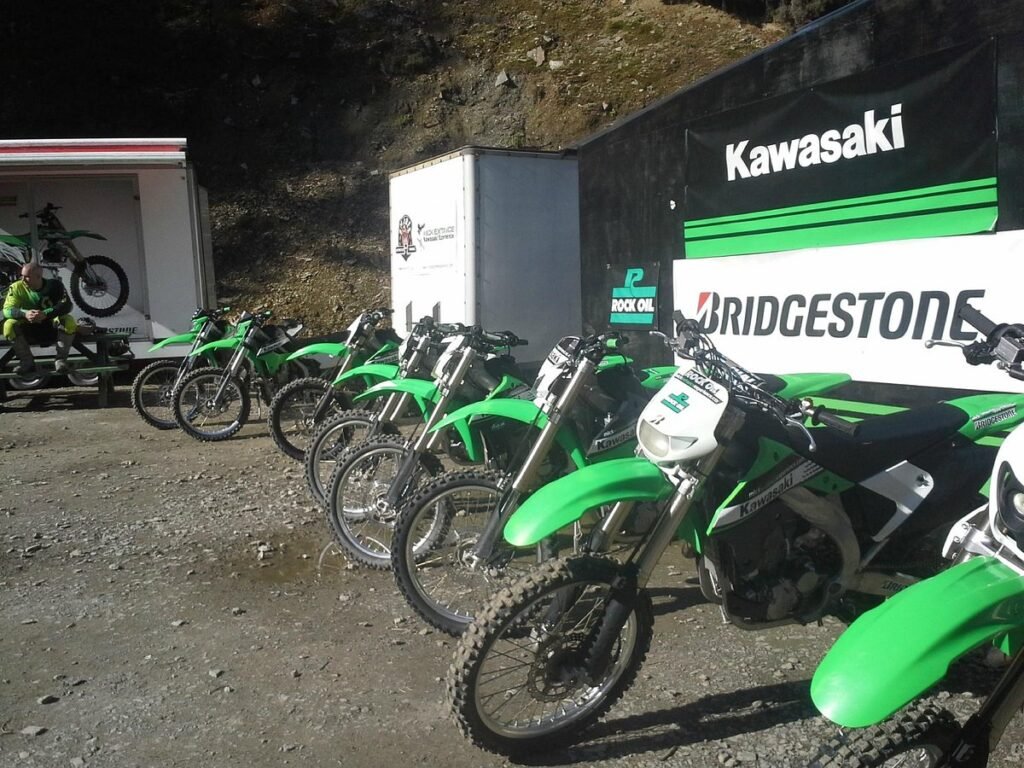Introduction: The Joy and Responsibility of Teaching Someone to Ride
Teaching someone how to ride a motorcycle is more than just showing them how to use the clutch or shift gears—it’s about building confidence, promoting safety, and instilling a lifelong appreciation for two-wheeled travel. Motorcycling offers a unique sense of freedom and adventure, but with that freedom comes responsibility. As an instructor—whether you’re a seasoned rider or a certified trainer—you play a crucial role in shaping a novice’s early experiences.
This comprehensive guide offers professional and dignified advice for helping a beginner learn to ride a motorcycle safely and confidently. Whether you’re teaching a friend, family member, or student, the following tips will ensure a solid foundation and make the learning process effective and enjoyable.
1. Set the Right Tone: Patience, Encouragement, and Safety
Before diving into any instruction, establish a calm, encouraging, and non-judgmental environment. Beginners are often nervous—after all, motorcycles can be intimidating at first.
- Be Patient: Everyone learns at their own pace. Expect mistakes and be ready to repeat instructions.
- Use Positive Reinforcement: Celebrate small wins. A confident student is a safer rider.
- Emphasize Safety Over Speed: Instill the mindset that safety is the top priority—not speed or bravado.
2. Choose the Right Motorcycle for a Beginner
Teaching on the wrong motorcycle can derail progress and lead to frustration or injury.
- Lightweight and Low Power: Look for bikes in the 250cc to 500cc range. These are easier to handle and more forgiving of mistakes.
- Low Seat Height: A bike where the rider can place both feet flat on the ground provides better stability.
- User-Friendly Controls: Avoid bikes with sensitive throttles or stiff clutches. Smooth operation helps build confidence.
Popular beginner models include the Honda Rebel 300, Yamaha MT-03, and Kawasaki Z400.
3. Ensure Proper Riding Gear
Before any instruction begins, make sure the novice is fully outfitted with the right safety gear:
- DOT-Approved Helmet: Full-face helmets offer the most protection.
- Armored Jacket and Pants: Textile or leather gear with CE-rated armor.
- Gloves: Preferably with knuckle protection and good grip.
- Boots: Over-the-ankle, sturdy boots with non-slip soles.
Explain the purpose of each item—not just for safety, but also to normalize full gear as the standard, not the exception.
4. Begin with the Basics – Off the Bike
Start the training without the engine running to avoid overwhelming the beginner.
- Motorcycle Anatomy: Explain the purpose and location of controls—throttle, clutch, brake levers, gear shifter, and kill switch.
- Mounting and Dismounting: Practice getting on and off the bike safely.
- Balancing the Bike: Have them walk the bike while seated to understand weight distribution.
- Clutch and Throttle Coordination: With the bike off, simulate pulling in the clutch and rolling on the throttle.
This foundational knowledge prepares them mentally before any real riding begins.
5. Controlled Environment: Start in a Safe Practice Area
Don’t hit public roads right away. Find an empty parking lot or closed course to begin real practice.
- Flat Surface: Avoid hills or areas with loose gravel.
- Minimal Distractions: Choose a quiet area to help the learner focus.
Use cones or chalk to set up simple practice courses for turning, braking, and figure-eights.
6. Engine On: Walking the Bike and Friction Zone
Start the motorcycle and introduce the student to the friction zone—the area where the clutch starts to engage.
- Walking the Bike: With the clutch partially engaged, have the student walk beside the bike as it slowly moves.
- Sitting and Rolling: Transition to sitting on the bike and letting it roll forward using only clutch control.
This step is crucial for clutch confidence and reducing stall anxiety.
7. The First Ride: Start, Stop, Repeat
Once the student can roll forward comfortably, it’s time for controlled riding.
- First Gear Only: No need to rush into shifting. Focus on starting smoothly, riding straight, and stopping with control.
- Practice Braking: Use both brakes gently and evenly. Stress progressive braking—gradually increasing pressure rather than grabbing the brakes.
- Ride in Straight Lines: Build balance and throttle control before adding turns.
Repeat until the student can start, ride, and stop with confidence.
8. Turning and Low-Speed Maneuvering
Turning at low speeds is one of the more challenging skills to master.
- Look Where You Want to Go: Emphasize head turns and target fixation. The bike follows the eyes.
- Counterbalance at Slow Speeds: Teach the student to shift body weight opposite to the turn at very slow speeds (like U-turns).
- Use the Rear Brake: Gentle rear brake can add stability during low-speed turns.
Practice figure-eights, wide turns, and tight circles. Use cones for visual markers.
9. Shifting Gears: Smooth Transitions and Timing
Gear shifting can intimidate beginners, but breaking it down step-by-step makes it easier.

- Clutch in, Shift Up, Throttle On: Start with upshifting from 1st to 2nd gear at low speeds.
- Downshifting: Teach matching RPMs and using engine braking properly.
- Smoothness is Key: Stress timing, throttle finesse, and clutch control.
Demonstrate each step and let the student mimic without the engine first if needed.
10. Introduce Basic Road Riding Skills
Once the student is confident in a controlled environment, you can begin preparing them for real road conditions.
- Lane Positioning: Teach where to ride in the lane to maximize visibility and space cushions.
- Checking Mirrors and Blind Spots: Develop habits for constant situational awareness.
- Traffic Signals and Signs: Review intersections, stop signs, yield rules, and crosswalks.
- Defensive Riding: Instill the principle that they should “ride like they’re invisible.”
Avoid rush hours or high-traffic areas on early rides. Build up to it gradually.
11. Encourage Motorcycle Safety Courses
Formal training through certified motorcycle safety courses is invaluable.
- MSF (Motorcycle Safety Foundation) Courses: In the U.S., these are widely recognized and often mandatory for new riders.
- Licensing Preparation: Courses typically include both a written test and riding test that help prepare students for state licensing requirements.
- Insurance Discounts: Completing a certified course often qualifies riders for lower insurance premiums.
Encourage continued learning—motorcycle safety is an evolving skill set.
12. Debrief and Reflect After Each Ride
Post-ride reviews are key to reinforcing good habits and identifying areas for improvement.
- What Went Well? Celebrate accomplishments like smooth turns or perfect stops.
- What Needs Work? Gently point out any mistakes or risky behaviors.
- Answer Questions: Invite the learner to ask anything they’re uncertain about.
Reflection helps solidify learning and boosts confidence.
13. Instill a Culture of Lifelong Learning
Even experienced riders are always learning. Encourage the new rider to keep growing:
- Read and Research: Books like Proficient Motorcycling by David Hough offer great insights.
- Join Rider Communities: Group rides, forums, and clubs can provide camaraderie and mentorship.
- Ride Often: Practice makes perfect. Regular riding sharpens reflexes and skills.
Conclusion: Build the Foundation for a Lifetime of Safe Riding
Teaching a novice to ride a motorcycle is a rewarding experience. You’re not just showing someone how to operate a machine—you’re guiding them into a new world of freedom, excitement, and self-reliance. With a thoughtful approach, patience, and emphasis on safety, you can help someone become not just a rider, but a skilled and responsible motorcyclist.
Remember, the best riders are always learning—and the best teachers always inspire that mindset.


